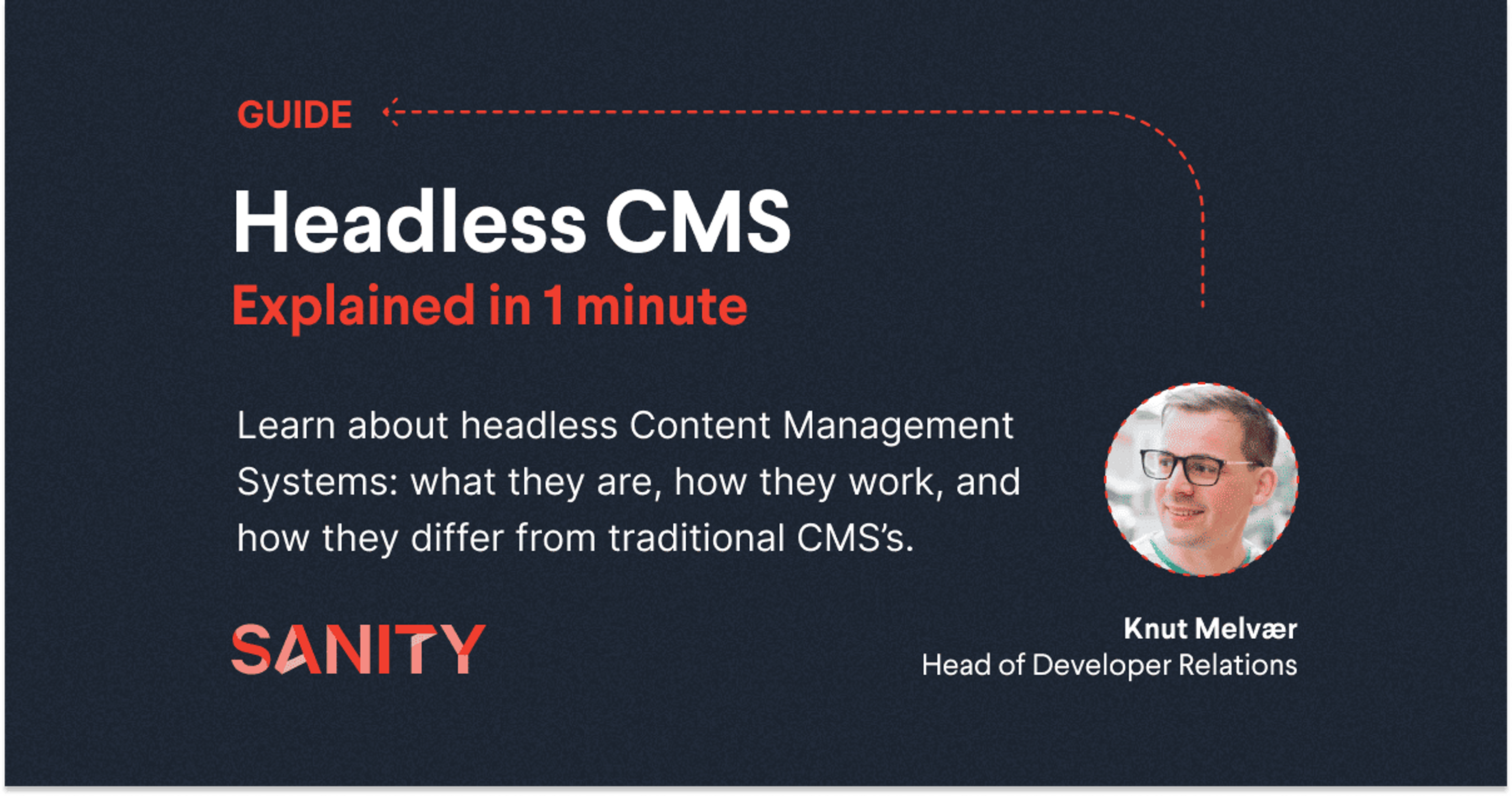
Headless CMS 101: The Only Guide You'll Ever Need
Eric Howey
Front-end Web Developer and Technical Writer
Last updated
Headless CMS 101: The Only Guide You'll Ever Need
How you will store and manage your content is an important business decision. It’s less like choosing a color of paint and more like choosing a partner.
While doing research, you’ve probably run into terms like decoupled, headless, digital experience platform, and more. Making sense of all the options, terminology, and marketing buzzwords is not easy. In this article, we’ll dive into decoupled CMSes and explore whether they’re the right fit for your business.
So let’s take a moment to lay down some important definitions:
A decoupled CMS separates how content is stored from how it is presented using an API. However, every decoupled CMS includes a built-in default presentation layer that can be used if needed.
The two most common examples are Wordpress and Drupal. In both, you can use the built-in presentation layer, or you can use the API to serve content to other marketing channels, like an app.
While these terms are sometimes used interchangeably, they do mean different things. Both technologies separate where the content is stored (the “body”) from where it is presented (the “head”). They also enable content reuse via an API and allow for a single source of truth. This makes omnichannel delivery easier and cheaper.
However, in a decoupled CMS, this separation is only partial; the head or presentation layer is still present, just decoupled. By contrast, in a headless CMS, the head or presentation layer is completely absent, making it fully headless.
As a result, a headless CMS typically enables a greater degree of customization and flexibility, but it can also require more initial configuration and setup.
Traditional CMSes and decoupled CMSes share a lot of common ground. Traditional CMSes and decoupled CMSes both include a presentation layer and a preconfigured user interface for entering your content. They both tend to be quick to set up and provide a happy path for using the default presentation layer (usually a website).
Some of the most well-loved decoupled CMSes are just traditional CMSes that have an API layer added on top. In a decoupled CMS, the API is sandwiched between the backend and frontend, making the frontend optional - decoupling them. Rather than using the default frontend, you can use the API to serve content to whatever platforms, frameworks or channels you want. This API is what gives decoupled CMSes their omnichannel capabilities.
Decoupled CMSes offer a middle ground in the modern CMS landscape. You get a lot of the advantages of a headless CMS—for example, content reuse and omnichannel delivery—while still maintaining some of the advantages of a traditional CMS.
Occupying this middle ground between traditional and headless CMSes makes a decoupled CMS great at many things but a master of none. A decoupled CMS has to make compromises to keep the integration with its default frontend and its preconfigured user interface.
A decoupled CMS is a great fit for small- to medium-sized businesses that are primarily focused on a marketing website with some potential for content reuse in the future.
The key advantage of a decoupled CMS is the default frontend, typically a website. This means that if you just need a website right now, then a decoupled CMS can make it easier to get started while keeping the door open for content reuse and omnichannel delivery down the road.
Decoupled CMSes try to make it straightforward to use their default frontend layer. Depending on what decoupled CMS you choose, this might even be something you could set up on your own. You will eventually need to pay a web developer to use the API and expand to an app, but the start-up costs are low.
While a decoupled CMS is undoubtedly better than a traditional CMS, and they do enable omnichannel content delivery, larger businesses with complex content need more.
More customization, more control, more security, and more scalability.
You get more with a headless CMS.
A headless CMS entirely gets rid of the default presentation layer unlocking next level flexibility and usability in your digital products. You can create a custom multi-step publishing workflow with editors and reviewers. You can use the API to serve content just as easily to a game console as to a watch. You can rely on the managed cloud infrastructure to breeze through traffic spikes.
Not every business will benefit from this degree of composability and customization but if this sounds like you, read on.
In the 2000s, it was enough for businesses to have a website. In the 2010s, it was enough to have a website and an app. In the 2020s, businesses must deliver interwoven digital experiences that are personal, contextual, and varied.
This is the domain of composable content platforms like Sanity, where content is treated as data and a powerful API gives teams complete control over how that data is presented, used, and reused. Not only can you create a website or an app, but you can control the digital signage in a showroom, serve content to an in-car screen, deliver personal ecommerce experiences, or even trigger a direct-mail print advertisement.
Composable content revolves around three principles: composability, customizability, and content as data. These principles empower businesses with the flexibility, insight, and velocity to build for today, tomorrow, and the future.
Sanity is doubling down on the composable future of content. With Sanity, businesses can run content-driven experiences at any scale.